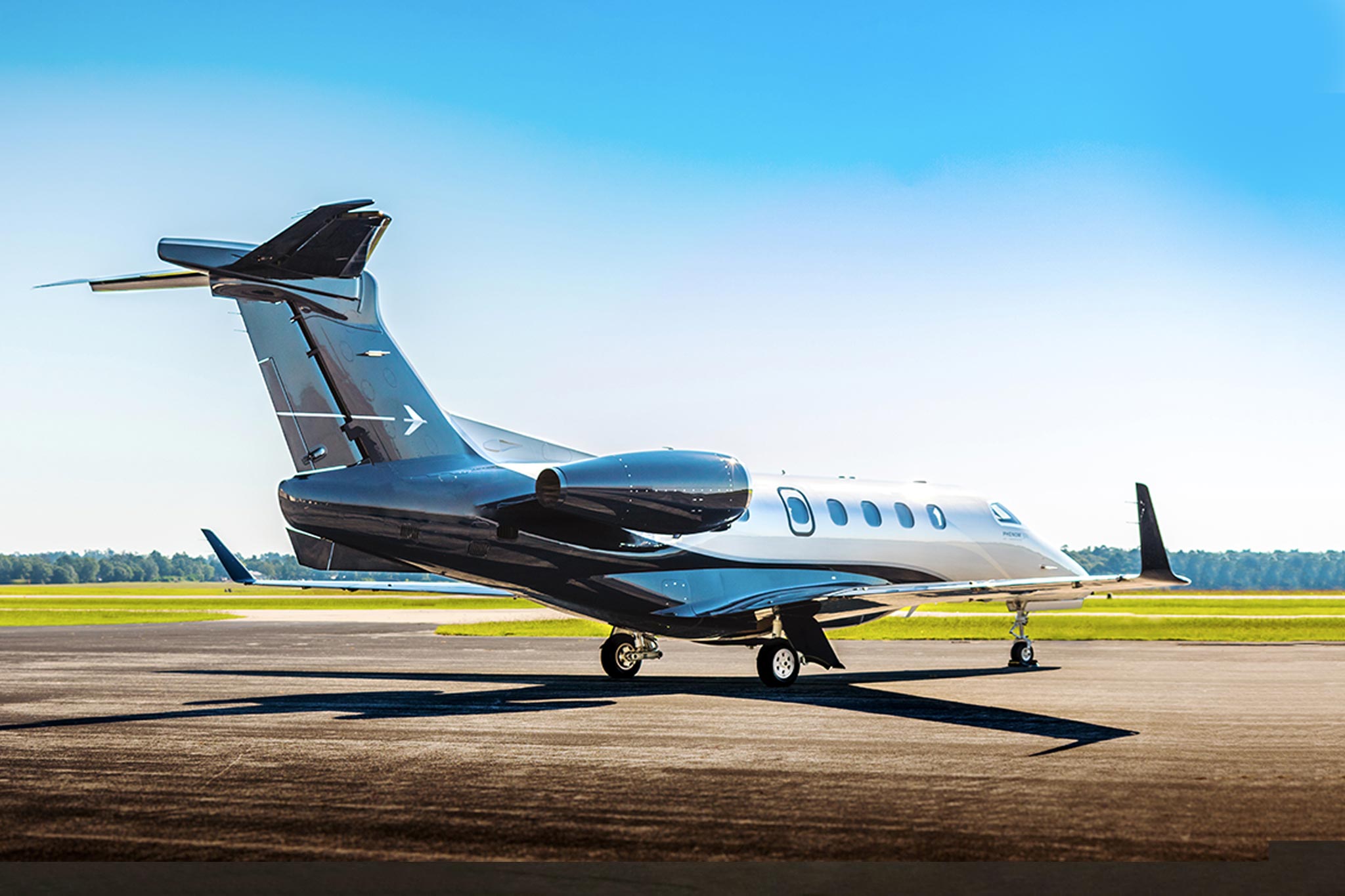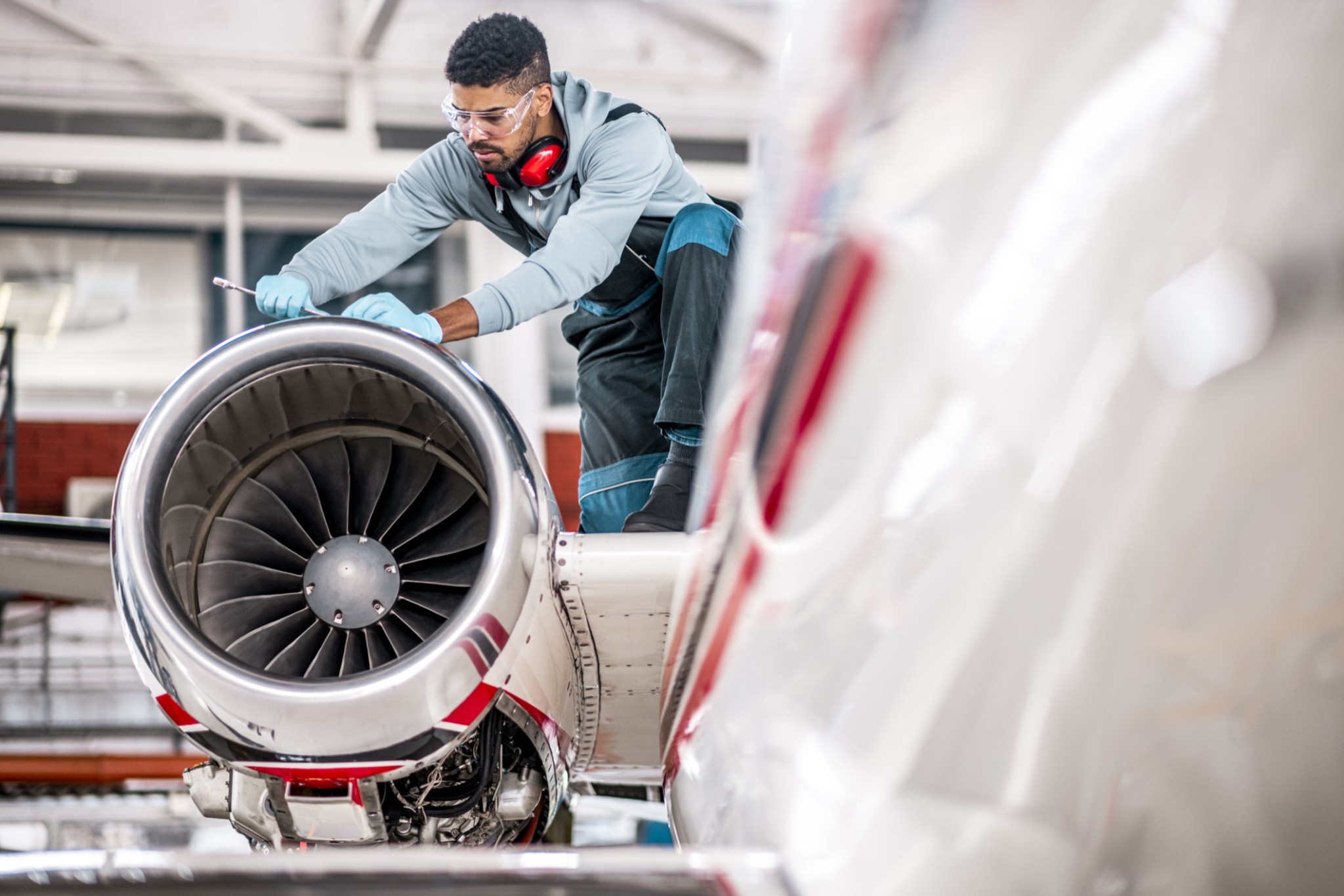
Equipping the Phenom: How Buyers Have Enhanced These Best-Selling Light Jets
Date
April 19, 2024Author
Egan Rzonca, Sales Operations SpecialistAs of March 2024, the Phenom line-up has delivered nearly 1,200 aircraft, making it one of the best-selling families of light jets to date. Since its introduction in 2009, Embraer has worked hard to keep the airplane at the forefront of the market by introducing optional extras that ensure safety, passenger comfort and efficiency. Let’s take a look at the evolution of options available on the Phenom aircraft over the years.
Phenom 100
The early Phenom 100s provided limited optional extras. The most sought after was the Rigid Rear Lavatory Door in replacement of a curtain. This provided significant reduction in noise entering through the rear of the cabin. While there weren’t many options from the factory, there were upgrades that were later made available, chief of which is the Garmin G1000NXi Upgrade. With this upgrade, owners and pilots can expect to see faster speeds and processing, easier readability, HSI Mapping and NEXRAD on the PFD, SurfaceWatch, FlightStream 510 connectivity and more. This upgrade costs around $100,000 and we have seen NXi upgrades representing a full return on investment in the pre-owned market.
As the Phenom 100 matured, Embraer added additional options. Most notably, the Forward Side Facing Seat and Rear Belted Lav, which ups the maximum passenger count to 6 passengers with 2 pilots. In 2010, the Rear Belted Lav was made available as an option and the market saw around a 50% take rate. The Belted Lav is also available as an aftermarket upgrade, costing around $130,000 on serial numbers prior to 135 and around $80,000 on serial numbers post 135 (this is due to internal engineering framework around the lavatory that is standard on serial number 135 and on). In 2012, the Forward Side Facing Seat was added as an option and has since become a fixture on over 80% of Phenom 100s since its debut. In 2017, the CPDLC and FAA DataComm were made available with the introduction of the 100EV variant; however, given the usually short nature of Phenom 100 flights, the take rate on these options is not high.
The latest variation of the Phenom 100, the 100EX, has introduced many new options that help keep the aircraft at the forefront of the light jet market. These options include Reactive Windshear Alerting, Automatic 3D Volumetric Weather Scanning and Runway Overrun Awareness and Alerting System (ROAAS). In speaking with owners that have 100EXs on order, we’ve found that almost all buyers have selected these new, groundbreaking options.
Phenom 300
The Phenom 300 offers a wide array of customizable features and enhancements. Since its debut in 2010, owners have enjoyed the luxury of tailoring their aircraft to their preferences. This includes selecting from various seating configurations, opting for WiFi connectivity through GoGo ATG, and enhancing avionics with additions like Synthetic Vision to the Garmin G1000 suite, TCAS II 7.1, TAWS Class A, and Flight Data Recorder.
The most popular option by far that was offered on the Phenom 300 platform was the Garmin Prodigy Touch Avionics suite. This is Embraer’s branding of the Garmin G3000 avionics suite and was available as an option from 2013-2015. It was so popular that Embraer made it standard from 2015 and on. The Prodigy Touch system introduced larger cockpit displays controlled by two central touchscreen controllers, along with higher resolution and much faster processing power than the standard G1000 system .
Also in the cockpit, the Phenom 300 comes fitted as standard with a Cockpit Voice and Data Recorder (CVDR), however, the optional Flight Data Recorder (FDR) is a requirement for the aircraft to be operated in most countries outside the United States. With the introduction of the Enhanced Phenom 300E in 2020, Embraer added options that enhanced safety from the cockpit, most notably Runway Overrun Awareness and Alerting System, Predictive and Reactive Windshear and 3D Volumetric Weather Scanning. In speaking with customers, these have proven very popular and are regular fixtures on new 300Es leaving the production line.
Moving to the cabin, Embraer wanted to ensure passenger comfort was unmatched by any other aircraft in the segment. Early on, prior to 2012, interior configurations consisted of a standard 6 seat interior with a forward extended refreshment cabinet or owners could opt for a Forward Rear Facing 7th Seat that would take the place of the extended refreshment cabinet. A Rear Belted Lavatory was also an option for those looking to maximize passenger capacity, upping the passenger count to 8 certified seats. Most early aircraft, through 2012, left the factory in the 7th Seat configuration, with few operators choosing the 6th seat configuration. Most buyers in today’s pre-owned market gravitate toward 7th Seat equipped aircraft, and as such, these aircraft enjoy a premium of around $150,000 to $200,000 in value over aircraft equipped with the standard 6 seat configuration.
Starting in 2012, the second most popular option behind Garmin G3000 was introduced; the Forward Two Place Divan. As its name implies, this was a certified two-seat divan that took the place of the forward refreshment cabinet on the right side of the aircraft. This option was met with immediate success and has carried a take rate of over 85% since its introduction, with almost all new aircraft being equipped with this option. Given its success and widespread installation in the Phenom 300 fleet, this is the most sought after seating configuration and carries an average of $500,000 premium over aircraft not equipped with the divan. In 2020, Embraer enhanced cabin comfort with the addition of ultra-fast GoGo AVANCE L5 as an updated option over the ATG 5000 system.
The evolution of Embraer’s Phenom line, particularly the Phenom 100 and 300, showcases the company’s commitment to innovation and customer satisfaction. From the early days with limited options to the current models packed with cutting-edge features, these light jets have continued to impress both owners and passengers alike. Whether it’s the enhanced safety measures, improved passenger comfort, or advanced avionics systems, the Phenom series has consistently raised the bar in the light jet market. As we look forward to what the future holds for this iconic lineup, one thing remains certain: the Phenom jets will continue to be a top choice for discerning aviation enthusiasts around the world.



